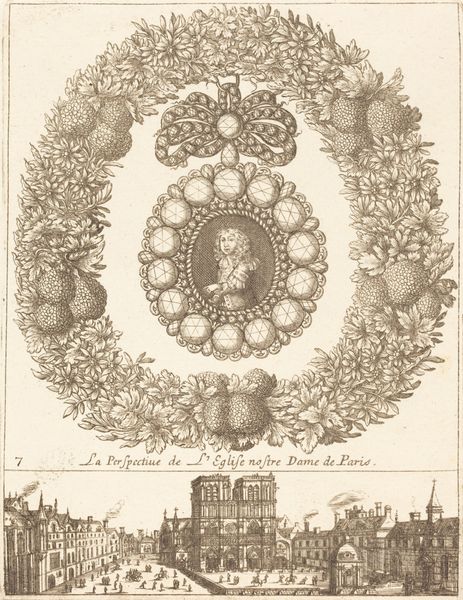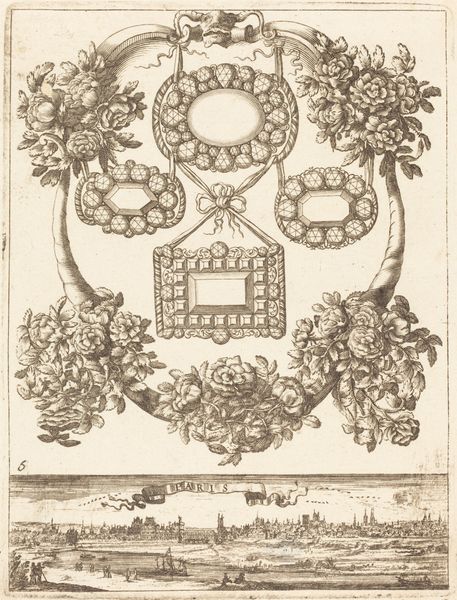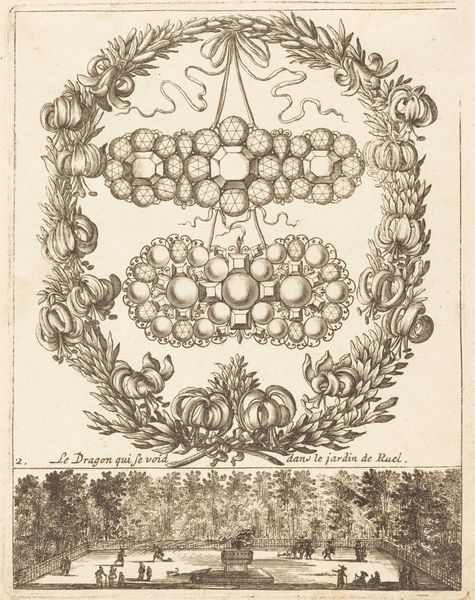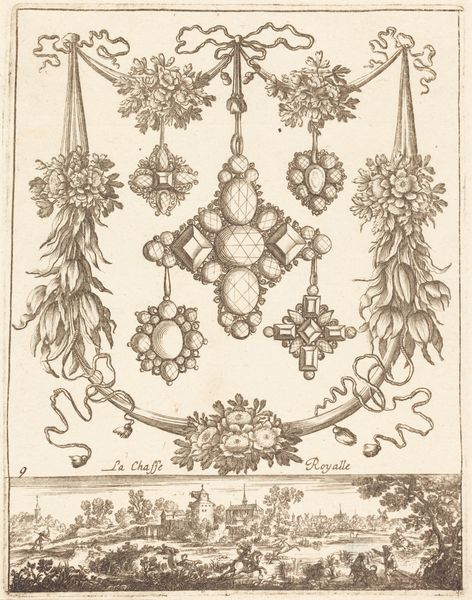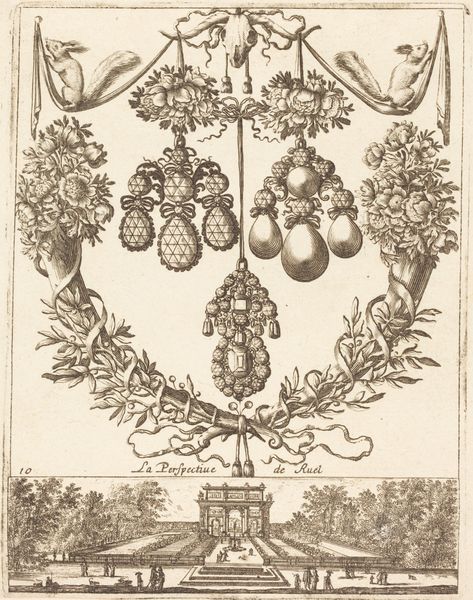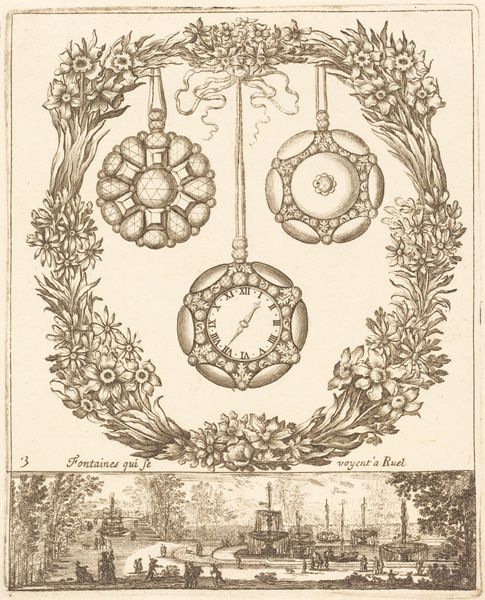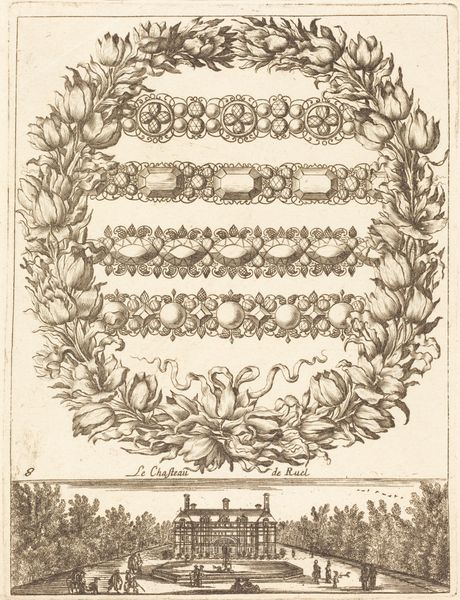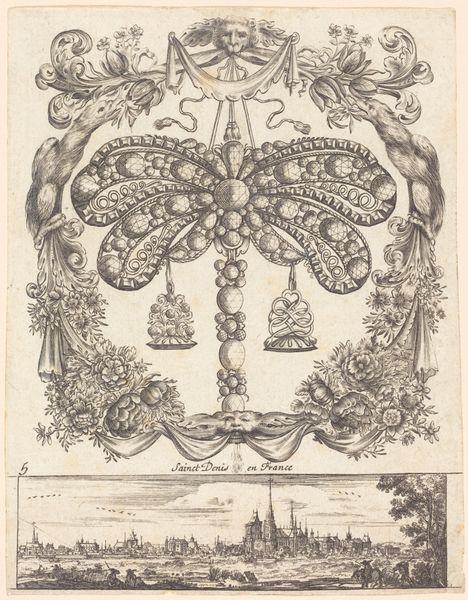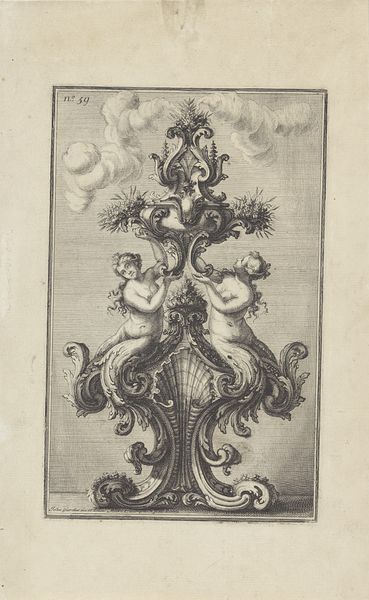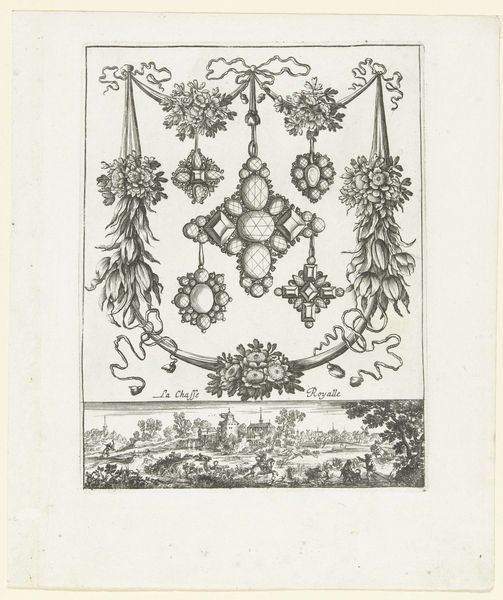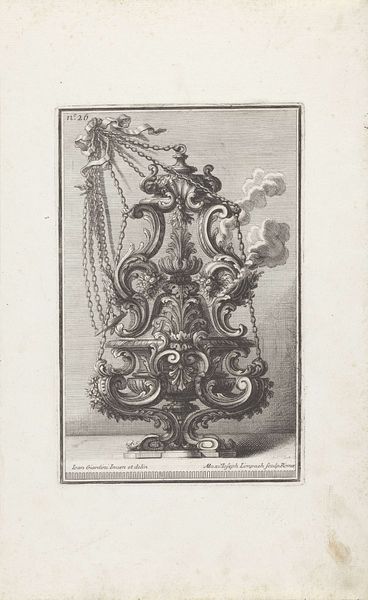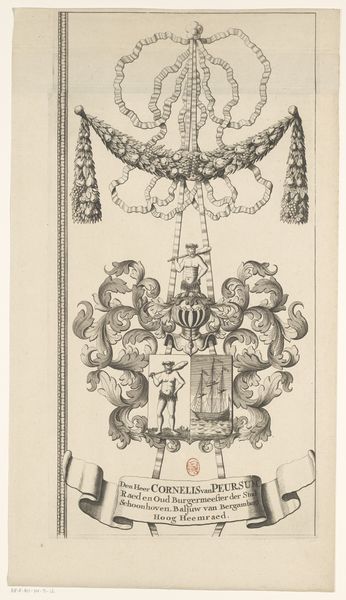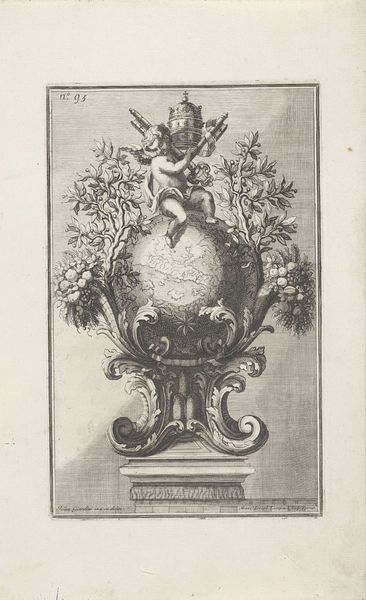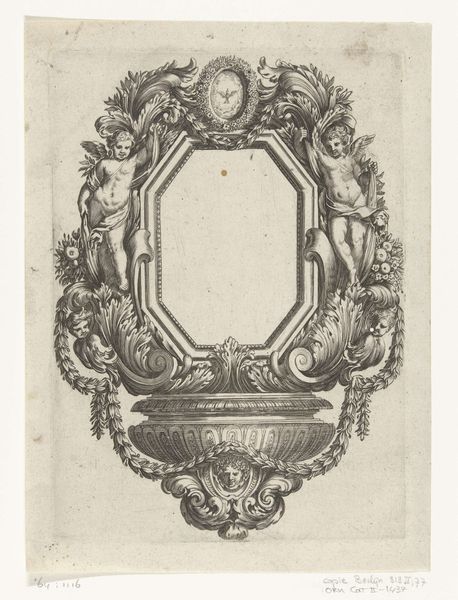
print, etching, engraving
#
baroque
# print
#
etching
#
landscape
#
cityscape
#
engraving
Copyright: National Gallery of Art: CC0 1.0
Editor: Here we have "La veue du pont de Rouen," or "View of the Rouen Bridge," an etching and engraving by François Le Febvre, from around 1665. It feels quite celebratory, but also a bit…coded, wouldn’t you say? What jumps out at you? Curator: The suspended jewels above the city view strike me immediately. It's a statement. These aren't just decorations; they're deliberately placed, almost hieroglyphic in their arrangement. Think about it - jewelry signifies wealth, status, power. Why suspend this symbolic system above a depiction of the city? Editor: To show Rouen’s wealth, perhaps? The city’s economic importance? Curator: Perhaps, but symbols often operate on multiple layers. Note how the jewelry and wreath frame the realistic depiction of the bridge and cityscape below. One realm—the earthly and practical—is contained within the other—the elevated and symbolic. Could it be hinting at a divine mandate? Or a veiled reference to a powerful patron’s influence on the city? What do you make of that flowered wreath? Editor: Flowers can mean so many things. Spring, rebirth, beauty… Curator: Exactly! And wreaths often symbolize victory or honor. It’s a powerful combination of earthly beauty and symbolic achievement surrounding symbols of power. Le Febvre creates a deliberate interplay, an invitation to decipher a deeper meaning. Notice the small, repetitive circles with stars inside the jewels -- a microcasm representing a far broader network. Editor: So it's not just about showing the bridge, it's about using symbolic language to elevate it… and perhaps connect it to something greater? Curator: Precisely. It's a dance between what is shown and what is suggested, a fascinating visual argument characteristic of Baroque art, speaking volumes about cultural memory.
Comments
No comments
Be the first to comment and join the conversation on the ultimate creative platform.
